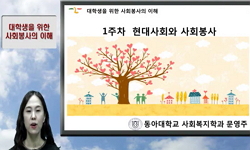본 연구는 간호대학 여학생의 음주실태, 음주동기와 문제음주의 상태 비교를 하고자 실시하였다. 연구대상자는 일부 지역 간호 대학생을 대상으로 하였고, 자료수집기간은 2018년 4월부터 5...
http://chineseinput.net/에서 pinyin(병음)방식으로 중국어를 변환할 수 있습니다.
변환된 중국어를 복사하여 사용하시면 됩니다.
- 中文 을 입력하시려면 zhongwen을 입력하시고 space를누르시면됩니다.
- 北京 을 입력하시려면 beijing을 입력하시고 space를 누르시면 됩니다.
https://www.riss.kr/link?id=A105554351
- 저자
- 발행기관
- 학술지명
- 권호사항
-
발행연도
2018
-
작성언어
Korean
- 주제어
-
등재정보
KCI등재
-
자료형태
학술저널
-
수록면
183-192(10쪽)
-
KCI 피인용횟수
8
- DOI식별코드
- 제공처
-
0
상세조회 -
0
다운로드
부가정보
국문 초록 (Abstract)
본 연구는 간호대학 여학생의 음주실태, 음주동기와 문제음주의 상태 비교를 하고자 실시하였다. 연구대상자는 일부 지역 간호 대학생을 대상으로 하였고, 자료수집기간은 2018년 4월부터 5월까지이며, 분석대상은 181명 이었다. 자료 분석은 정상음주 군과 문제 음주 군과의 차이를 알아보기 위하여 빈도 분석을 사용하였고, 문제음주와의 상관관계는 Pearson`s correlation을 이용하였으며, 문제음주 관련요인을 분석하기 위해 로지스틱회귀분석(Logistic regression)을 실시하였다. 그 결과 음주횟수, 마시는 속도, 음주동기, 생활스트레스, 음주문제발생경험이 문제음주에 대한 위험비가 높았다. 구체적으로 살펴보면, 음주횟수로 볼 때 음주횟수가 일 년에 1-4회인 군보다 일주일에 2-3회인 군에서 문제음주에 대한 위험비가 21.53배 높았으며, 음주동기는 음주동기가 낮은 군 보다 음주동기가 높은 군에서 5.96배, 음주문제발생경험은 음주문제발생경험이 낮은 군에 비해 음주문제발생경험이 높은 군에서 8.80배 문제음주에 대한 위험비가 높게 나타났다. 결론적으로, 여대생의 문제음주 관련 요인은 음주횟수, 마시는 속도, 음주동기, 생활스트레스, 음주문제발생경험이 관련성이 높게 나타났다. 따라서 대학생들의 음주실태와 위험요인을 파악하고, 주기적인 절주교육, 문제음주선별과 예방프로그램을 통해 문제음주가 될 위험성을 낮추고, 건전음주문화 정착을 위해 노력해야 할 것이다.
다국어 초록 (Multilingual Abstract)
The purpose of this study was to compare female nursing college students with respect to drinking habit, drinking motives, and drinking problems. (Ed note: confirm edited version; original is a bit unclear in intent) Subjects include nursing college s...
The purpose of this study was to compare female nursing college students with respect to drinking habit, drinking motives, and drinking problems. (Ed note: confirm edited version; original is a bit unclear in intent) Subjects include nursing college students in some areas, and data were collected between April and May, 2018. A total of 181 questionnaires were analyzed. The frequency analysis was used to examine the differences between the normal and drinking-problem groups. Pearson"s correlation analysis was used to examine the correlations of drinking problems, and logistic regression analysis was used to analyze the factors related to drinking problems. The findings show that the frequency of drinking, rate of drinking, drinking motives, life stress, and prior experiences with drinking problems recorded a high risk ratio for drinking problems. Specifically, the group with a drinking frequency of 2~3 times per week showed a risk ratio that was 21.53 times higher than the group with a drinking frequency of 1~4 times per year. The group of higher drinking motives recorded a risk ratio that was 5.96 times higher than the group of lower drinking motives. The group of higher experiences with drinking problems showed a risk ratio that was 8.80 times higher than the group of lower experiences with drinking problems. In conclusion, the frequency of drinking, rate of drinking, drinking motives, life stress, and experiences with drinking problems were factors highly related to the drinking problems in female college students. The results highlight that careful evaluation of drinking habit of college students are needed. Moreover, periodic temperance education and programs designed to identify and prevent drinking problems are necessary to lower the risk of developing drinking problems and promote a safe drinking culture.
목차 (Table of Contents)
- 요약
- Abstract
- 1. 서론
- 2. 연구방법
- 3. 연구결과
- 요약
- Abstract
- 1. 서론
- 2. 연구방법
- 3. 연구결과
- 4. 논의
- 5. 결론
- References
참고문헌 (Reference)
1 도은영, "임신부의 임신 중 음주 발생 관련 요인" 한국보건사회연구원 31 (31): 284-307, 2011
2 정슬기, "여자 대학생의 문제음주 영향요인 분석: 남자 대학생과의 비교" 한국정신건강사회복지학회 (27) : 176-198, 2007
3 류현숙, "여대생의 음주행위에 영향을 미치는 요인" 한국지역사회간호학회 23 (23): 307-315, 2012
4 손애리, "여고생의 음주 실태와 문제음주에 영향을 미치는 요인" 알코올과 건강행동학회 12 (12): 155-162, 2011
5 전병한, "수련의 및 전공의의 음주 행태가 문제 음주 환자의 선별 검사, 중재 및 치료에 대한 인식에 영향을 미치는가?" 대한응급의학회 21 (21): 495-503, 2010
6 윤명숙, "대학생의 우울, 취업스트레스가 자살생각에 미치는 영향 : 문제음주의 조절효과" 한국청소년학회 19 (19): 109-137, 2012
7 공마리아, "대학생의 대학생활 스트레스가 정신건강에 미치는 영향 - 경기도 P시에 소재한 대학을 중심으로 -" 한국재활심리학회 19 (19): 1-22, 2012
8 서경현, "대학생 스트레스원에 대한 대처방식으로서 음주의 역할" 한국청소년학회 18 (18): 331-352, 2011
9 박형숙, "간호대학생의 음주실태, 음주거부 자기효능감과 정신건강: 정상음주군과 문제음주군 비교" 한국간호교육학회 17 (17): 110-119, 2011
10 H. U. Shin, "The Relationship between drinking motives and drinking problems" 5 (5): 93-109, 1999
1 도은영, "임신부의 임신 중 음주 발생 관련 요인" 한국보건사회연구원 31 (31): 284-307, 2011
2 정슬기, "여자 대학생의 문제음주 영향요인 분석: 남자 대학생과의 비교" 한국정신건강사회복지학회 (27) : 176-198, 2007
3 류현숙, "여대생의 음주행위에 영향을 미치는 요인" 한국지역사회간호학회 23 (23): 307-315, 2012
4 손애리, "여고생의 음주 실태와 문제음주에 영향을 미치는 요인" 알코올과 건강행동학회 12 (12): 155-162, 2011
5 전병한, "수련의 및 전공의의 음주 행태가 문제 음주 환자의 선별 검사, 중재 및 치료에 대한 인식에 영향을 미치는가?" 대한응급의학회 21 (21): 495-503, 2010
6 윤명숙, "대학생의 우울, 취업스트레스가 자살생각에 미치는 영향 : 문제음주의 조절효과" 한국청소년학회 19 (19): 109-137, 2012
7 공마리아, "대학생의 대학생활 스트레스가 정신건강에 미치는 영향 - 경기도 P시에 소재한 대학을 중심으로 -" 한국재활심리학회 19 (19): 1-22, 2012
8 서경현, "대학생 스트레스원에 대한 대처방식으로서 음주의 역할" 한국청소년학회 18 (18): 331-352, 2011
9 박형숙, "간호대학생의 음주실태, 음주거부 자기효능감과 정신건강: 정상음주군과 문제음주군 비교" 한국간호교육학회 17 (17): 110-119, 2011
10 H. U. Shin, "The Relationship between drinking motives and drinking problems" 5 (5): 93-109, 1999
11 H. E. Kim, "The Effects of perceived stress, dysfunctional metacognition on problematic drinking of female university student, Paper presented at" 1 : 340-341, 2009
12 J. S. Kim, "Screening criteria of alcoholism by alcohol use disorders identification test(AUDIT) in Korea" 20 (20): 1152-1159, 1999
13 B. Y. Jung, "Relations of stress with drinking behavior and drinking related problems" Inha University 2009
14 J. H. Kim, "Prevalence and the factors associated with binge drinking, alcohol abuse, and Alcohol dependence: A population study of Chinese adults in Hong Kong" 43 (43): 360-370, 2008
15 J. A. Oliver, "Nicotine interactions with low-dose alcohol: pharmacological influences on smoking and drinking motivation" 1222 (1222): 1154-1165, 2013
16 M. L. Cooper, "Motivations for alcohol use among adolescents: Development and validation of a four-factor model" 6 (6): 117-128, 1994
17 J. Joo, "Korean culture of heavy drinking and directions on policy related to alcoholism" 19 (19): 73-115, 2009
18 "Korea national health and nutrition examination survey(Internet)" Ministry of Health & Welfare
19 S. Lemke, "Gender differences in social influences and stressors linked to increased drinking" 69 : 695-702, 2008
20 F. Faul, "G*POWER 3: A Flexible statistical power analysis program for the social, behavioral, and biomedial sciences" 39 (39): 175-191, 2007
21 K. K. Chon, "Epidemiologic studies-depression scale in the korean version" 6 (6): 59-76, 2001
22 H. W. Shin, "Effects of personality and drinking motivation on drinking problems" Korea University Graduate School 1998
23 S. H. Lee, "Drinking experiences of female college students" 12 (12): 1-19, 2011
24 K. K. Chon, "Development of the revised life stress scale for college students" 5 (5): 316-335, 2000
25 B. M. Bewick, "Changes in undergraduate student alcohol consumption as they progress through university" 8 (8): 2008
26 L. S. Radloff, "CES-D(Center for Epidemiologic Studies Depression Scale)" 1977
27 R. A. Breslow, "Alcoholic beverage consumption, nutrient intakes, and diet quality in the US adult population, 1999-2006" 110 (110): 551-562, 2010
28 B. J. Kim, "Alcohol consumption and incidence of metabolic syndrome in Korean men: A 3-year follow-up study" 76 (76): 2363-2367, 2012
29 B. U. Lee, "AUDIT : Alcohol use disorders identification test" 4 (4): 83-92, 2000
30 M. Kim, "A Study of the smoking university and college students" 3 (3): 23-27, 2015
31 W. M. Cox, "A Motivational model for alcohol use" 97 (97): 168-180, 1990
동일학술지(권/호) 다른 논문
-
- 한국산학기술학회
- 한현각(Hyun Kak Han)
- 2018
- KCI등재
-
Biomass Gasification 공정에서 발생하는 Tar 제거연구
- 한국산학기술학회
- 김주회(Ju-Hoe Kim)
- 2018
- KCI등재
-
- 한국산학기술학회
- 이성행(Seong-Haeng Lee)
- 2018
- KCI등재
-
맵리듀스 온라인 프레임워크에서 공간 데이터 스트림 처리를 위한 동적 부하 관리 기법
- 한국산학기술학회
- 정원일(Weonil Jeong)
- 2018
- KCI등재
분석정보
인용정보 인용지수 설명보기
학술지 이력
| 연월일 | 이력구분 | 이력상세 | 등재구분 |
|---|---|---|---|
| 2026 | 평가예정 | 재인증평가 신청대상 (재인증) | |
| 2020-01-01 | 평가 | 등재학술지 유지 (재인증) |  |
| 2017-07-01 | 평가 | 등재후보로 하락(현장점검) (기타) |  |
| 2017-07-01 | 평가 | 등재학술지 선정 (계속평가) |  |
| 2015-01-01 | 평가 | 등재학술지 유지 (등재유지) |  |
| 2011-01-01 | 평가 | 등재학술지 유지 (등재유지) |  |
| 2008-01-01 | 평가 | 등재학술지 선정 (등재후보2차) |  |
| 2007-08-28 | 학술지등록 | 한글명 : 한국산학기술학회논문지외국어명 : Journal of Korea Academia-Industrial cooperation Society |  |
| 2007-07-06 | 학회명변경 | 영문명 : The Korean Academic Inderstrial Society -> The Korea Academia-Industrial cooperation Society |  |
| 2007-01-01 | 평가 | 등재후보 1차 PASS (등재후보1차) |  |
| 2005-01-01 | 평가 | 등재후보학술지 선정 (신규평가) |  |
학술지 인용정보
| 기준연도 | WOS-KCI 통합IF(2년) | KCIF(2년) | KCIF(3년) |
|---|---|---|---|
| 2016 | 0.68 | 0.68 | 0.68 |
| KCIF(4년) | KCIF(5년) | 중심성지수(3년) | 즉시성지수 |
| 0.66 | 0.61 | 0.842 | 0.23 |




 ScienceON
ScienceON DBpia
DBpia






